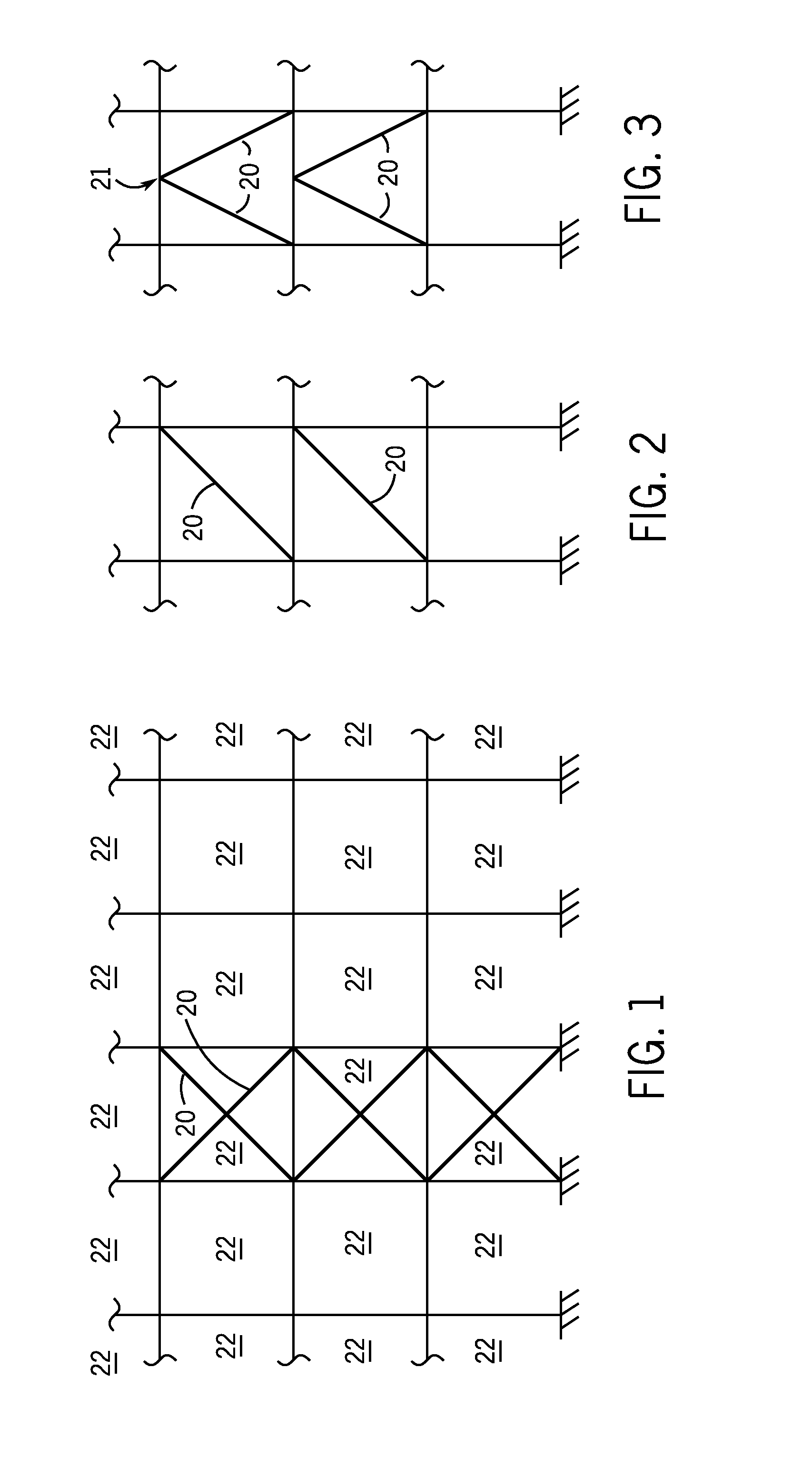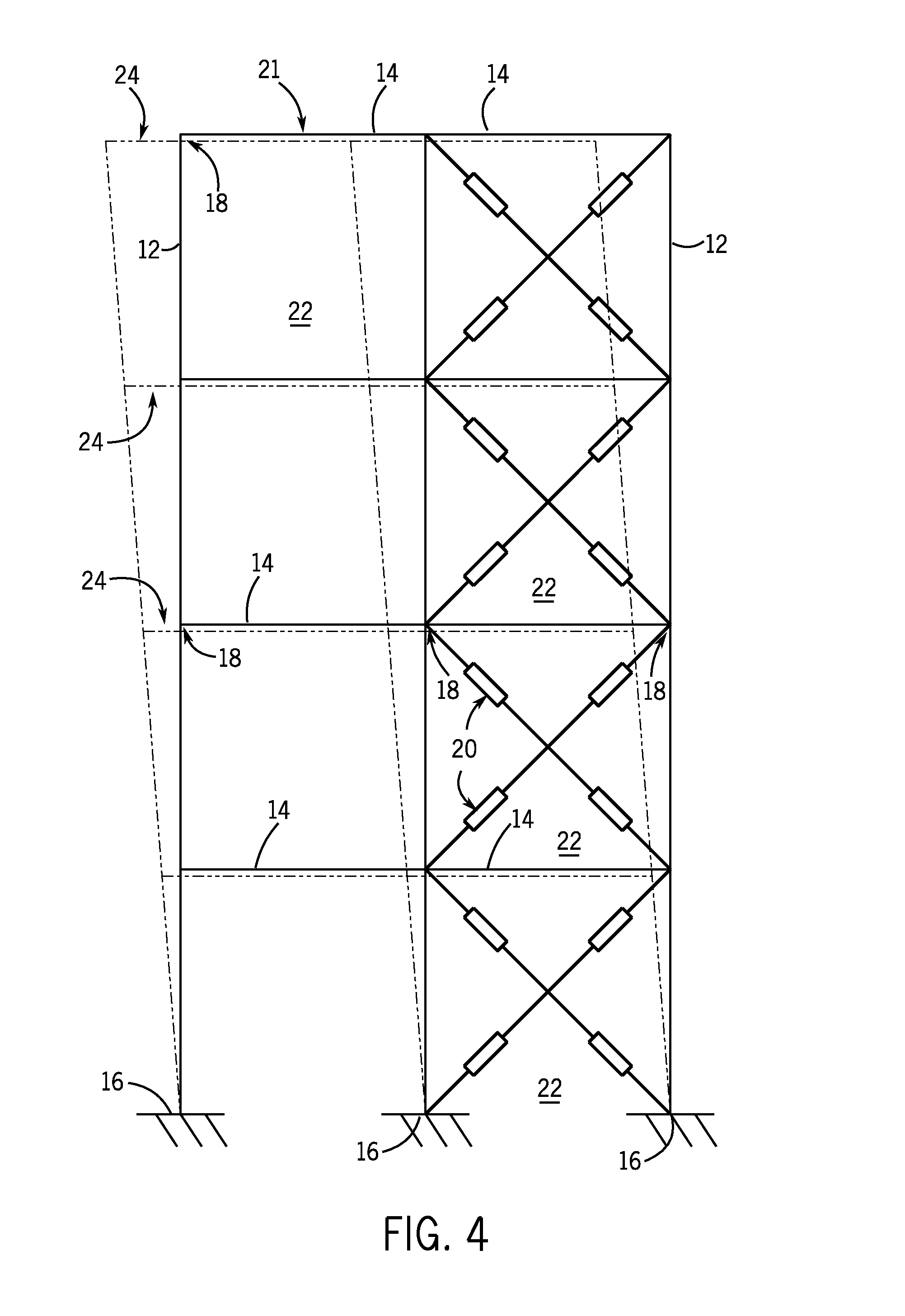Structural connection mechanisms for providing discontinuous elastic behavior in structural framing systems
a structural framing system and discontinuous elastic technology, applied in the direction of rod connections, mechanical devices, shock-proofing, etc., can solve the problems of structural members deformed, structural misalignment, and structural structural members that are not stable, so as to and enhance the elastic characteristics of the structural frame and its response.
- Summary
- Abstract
- Description
- Claims
- Application Information
AI Technical Summary
Benefits of technology
Problems solved by technology
Method used
Image
Examples
Embodiment Construction
[0025]The operating environment of the invention is described with respect to a structural element, frame or framing system for a building or other structures subjected to transient loads, i.e., short term loading events including but not limited to seismic, wind, impact, machine, explosion, impulse, and moving loads. According to embodiments of the invention, such structural element, frame, or framing systems can occur and the invention can be implemented in architectural buildings, bridges, towers, mechanical process structures and other machine and mechanical designs to improve their response to various transient and non-transient loads; and otherwise protect structural frame components and systems from the adverse effects of overstress. Thus, embodiments of the invention are meant to encompass a variety of structural elements, structures and loading events applied thereto.
[0026]Referring to FIGS. 1-4, a structural frame 10 is schematically illustrated that incorporates embodimen...
PUM
 Login to view more
Login to view more Abstract
Description
Claims
Application Information
 Login to view more
Login to view more - R&D Engineer
- R&D Manager
- IP Professional
- Industry Leading Data Capabilities
- Powerful AI technology
- Patent DNA Extraction
Browse by: Latest US Patents, China's latest patents, Technical Efficacy Thesaurus, Application Domain, Technology Topic.
© 2024 PatSnap. All rights reserved.Legal|Privacy policy|Modern Slavery Act Transparency Statement|Sitemap



